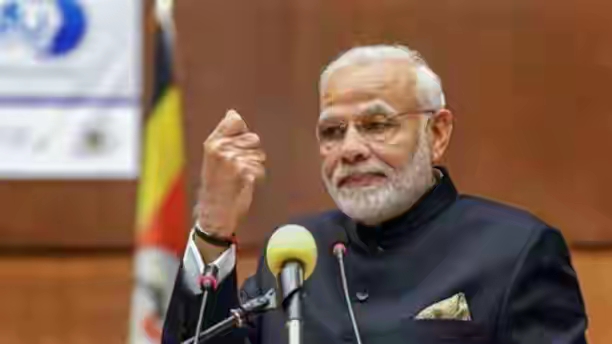
On September 3, 2025, the Indian government suddenly announced a large-scale consumption tax reform: The original four GST (Goods and Services Tax) brackets of 5%, 12%, 18% and 28% will be simplified to two brackets of 5% and 18%, covering 175 types of goods including toothpaste and automobiles. At the same time, the premium tax rates for health and life insurance will be abolished. It is estimated that a loss of 480 billion Indian rupees in tax revenue will be achieved. This "unconventional" policy adjustment, which seems like a temporary market rescue, is actually a systematic response by India to external shocks, weak internal demand and the pressure of institutional reform. It conceals three deep-seated logics behind it.
Logic One: Hedge against the impact of US tariffs and alleviate the export predicament. The direct trigger for this tax reduction was the 50% punitive tariff imposed by the United States on Indian exports. As an important export market for India, the US tariffs have led to an export loss of approximately 30% for India's engineering, textile and other industries. The export value of engineering products to the US alone has dropped by 22% compared with the same period last year. Although Indian exporters have planned to lobby the central bank to settle at a preferential exchange rate of 103 rupees to 1 US dollar (the current rate is about 1:83), the adjustment of the exchange rate will take time, and the reform of the consumption tax has become an "emergency handle". By reducing the tax burden in the domestic production process, India is attempting to lower the terminal prices of goods. Take small cars as an example. After the tax rate was reduced from 28% to 18%, the average selling price per vehicle dropped by 5% to 8%. This not only enhances its competitiveness in the domestic market against imported vehicles but also leaves room for export enterprises to lower prices, indirectly offsetting the cost of tariffs. This strategy of "reducing taxes domestically to compensate for external tariffs" is a typical path for emerging economies to deal with trade protectionism. It not only avoids direct trade confrontation but also buys a buffer period for export industries.
Logic Two: Activate domestic consumption and address the issue of sluggish growth. From the perspective of the economic fundamentals, tax cuts are an "inevitable choice" for India to deal with the weak domestic demand. Since the end of 2024, India has witnessed a vicious cycle of high inflation and declining purchasing power: in October, the year-on-year increase in the consumer price index (CPI) reached 6.21%, food prices soared by 42.18%, and the real purchasing power of middle-income households dropped by 11% compared to last year. During the same period, the growth rate of retail sales slowed from 7.5% to 4.8%, and the sales of durable goods such as automobiles and home appliances have declined for three consecutive months. Although India's manufacturing PMI remained in the expansion range of 57.6 in May, it was mainly driven by export orders, and the contribution of domestic demand dropped from 60% to 45%. This tax reduction precisely targets the pain points of consumption: lowering the tax rate on daily necessities such as toothpaste and shampoo from 18% to 5% is expected to reduce the prices of these goods by 8% to 12%, directly benefiting the middle and low-income groups, which account for 60% of the population. The reduction in tax rates on large items such as automobiles and air conditioners, combined with the personal income tax reduction implemented in February, is expected to unleash the consumption potential of the middle class.
Logic Three: The long-term Game between Simplifying the tax system and Fiscal Balance. This reform is also a "crucial step" for India to modernize its tax system. Since the implementation of GST in 2017, the four tax rates have been widely criticized for their complex classification and high collection and management costs. The compliance costs for small and medium-sized enterprises account for 3% to 5% of their revenue. Simplifying the tax rate into two brackets not only reduces the difficulty for enterprises to file tax returns but also cuts down on tax loopholes. Previously, due to the large number of tax rate brackets, some enterprises evaded taxes through "category mismatch", resulting in an actual GST collection rate of only 68%. After the simplification, it is expected that the collection rate can increase to over 75%, partially offsetting the income loss caused by tax reduction. More importantly, this adjustment is in line with India's long-term fiscal plan: for the fiscal year 2025-2026, India has set the fiscal deficit target at 4.4% of GDP, a decrease of 0.4 percentage points compared to the previous fiscal year. The simplification of the tax system can provide support for deficit control by expanding the tax base and improving the efficiency of tax collection and management.
However, the implementation of the policy still faces challenges. On the one hand, the depreciation pressure on the rupee may push up the prices of imported goods, partially offsetting the inflationary relief effect brought about by tax cuts. On the other hand, the differences among states regarding the apportionment of tax losses have not been fully resolved, which may affect the implementation of policies. If it can be coordinated with the Reserve Bank of India's exchange rate support and liquidity easing (the interest rate was cut to 6.25% in February 2025), and form a "fiscal + monetary" policy synergy, this consumption tax reform may become a turning point for the Indian economy to shift from "export dependence" to "dual circulation at home and abroad".
Essentially, India's current tax cut is not merely a "stimulus policy", but rather a balance struck between "short-term growth stabilization" and "long-term reform promotion" against the backdrop of increasing global economic uncertainty. It not only responds to the urgency of the current US tariff impact and the sluggish domestic consumption, but also lays the foundation for tax system optimization and fiscal sustainability. It can be regarded as a "specimen practice" for emerging economies to deal with the complex economic environment.

The South Korean political arena has once again been embroiled in a public controversy over a judicial investigation that has shaken the entire nation.
The South Korean political arena has once again been embroi…
On the morning of December 29th local time, the precious me…
According to the US media Barchart, recently, the fluctuati…
On December 29th, Mar-a-Lago in Florida, USA, witnessed a h…
SoftBank Group announced on Monday that it has agreed to ac…
Recently, the US State Department issued a visa ban, adding…